Twin Lens Reflex cameras are perhaps the most iconic looking of all old film cameras. Every time I take out a TLR to shoot some film, I am approached by curious strangers far more often than when I have any other type of film camera. TLR design is still very popular today as you can buy iPhone cases and Fuji Instax cameras with TLR inspired designs.

For a camera to be considered a TLR, it must have 3 (maybe 4) things:
- Two Lenses
- Shaped like a box
- Waist Level Viewfinder (or at least the capability of one)
- (debatable) The ability to see focus within the viewfinder
The Rolleiflex is the undisputed champion of the TLR as Franke & Heidecke produced them from the late 1920s all the way to the turn of the 21st century, and hundreds of other companies made TLRs that copied the same basic design. But how different are they? I’ve heard the adage in reference to TLRs that “if you’ve seen one, you’ve seen them all”, but is that really true?
This weeks Keppler’s Vault takes a look at an article from the October 1960 issue of Modern Photography that explores the many different designs of various TLRs that were available at the time. It starts off with some history, but immediately jumps into explanations for why some TLRs have a viewing lens with a larger maximum aperture than the taking lens. If you’ve ever wondered why 4-element Tessars almost always have a maximum aperture of f/3.5, the answer is within. For those of you who like technical details like lens field of angle and maximum lines of resolution, you’re in for a treat!
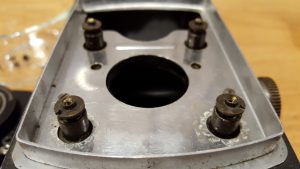
Moving beyond the lens, the article covers the different ways in which TLRs achieve focus. The simplest is the externally geared lenses like the Argus Argoflex in the image above, but then there’s the moving lens board ones that either use a cam like the Rolleiflex, or a lever like the Ricoh Diacord. With TLRs sometimes less is more as the externally geared styles are not only cheaper to make as they have less parts, but almost never fall out of alignment like cammed focus systems sometimes can.
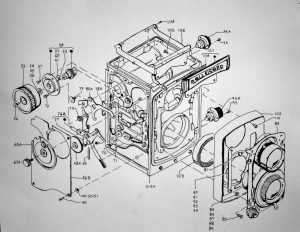
Next is the film transport. Advanced “Automat” cameras have automatic exposure counters via a toothed feeler shaft that feels the backing paper of the film, yet others rely on a simple red window and a manual cocking lever. Once again, sometimes less is more as these automatic feeler shafts add complexity and cost to the camera, but also can fail with use, or even produce inconsistent results when using different thickness films.
Correction: On the 6th page of the article in the description for image 7, it is suggested that only Rolleiflexes and -cords have full automatic parallax correction. This isn’t true as the Voigtländer Superb also has this feature.
But wait, there’s more! The article continues on with discussions about viewfinders and parallax correction, ground glass vs Fresnel screens, and other accessories that are available. I’ll spare you my summary of what’s written as I encourage you to read the article below for the full details, but even if you don’t hopefully the next time you hear someone suggest that “if you’ve seen one TLR, you’ve seen them all”, you are well prepared with the knowledge of how much variety there really is.
All scans used with permission by Marc Bergman, 2019.

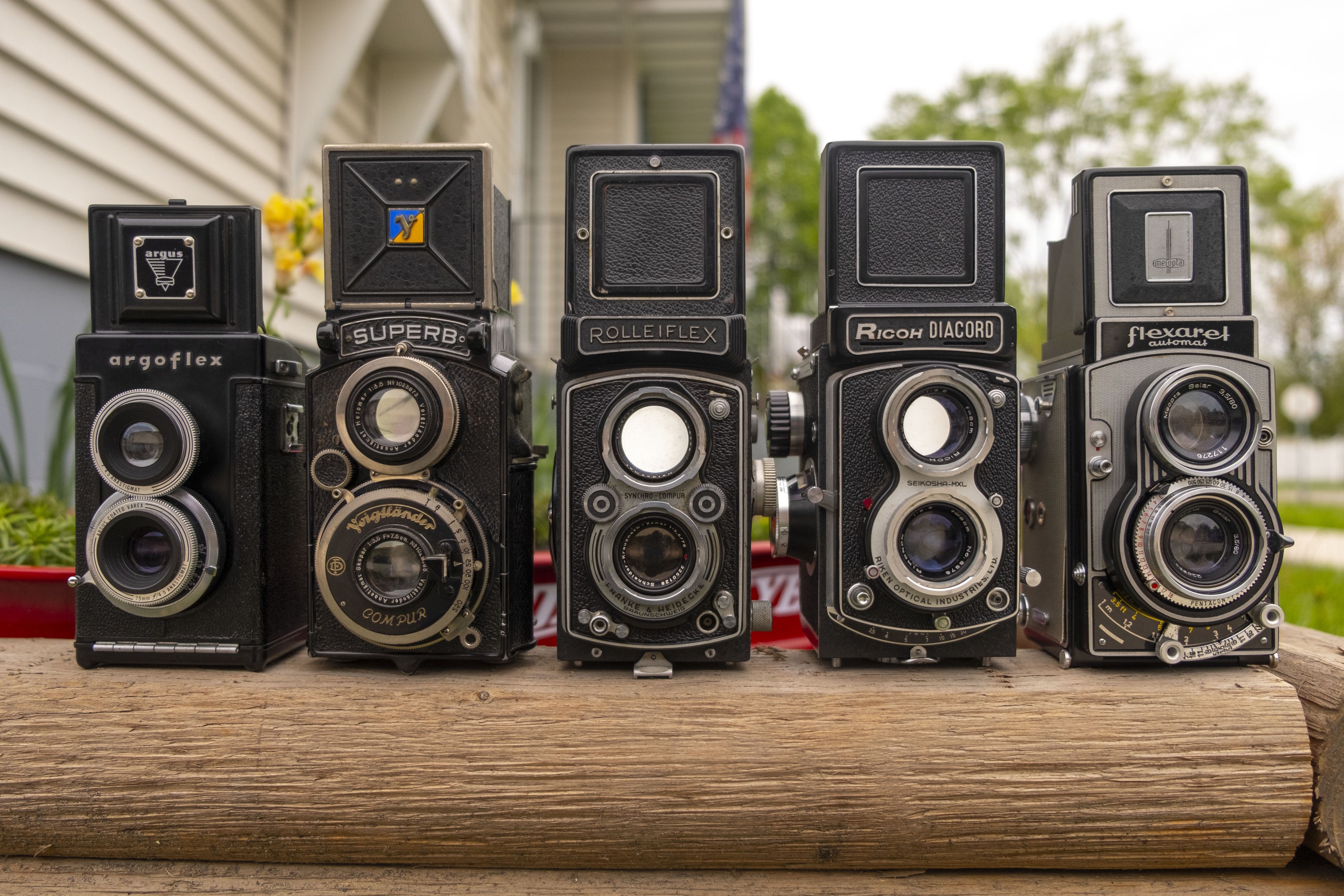
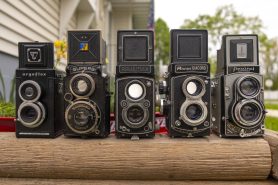
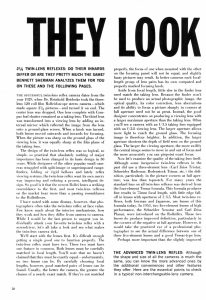
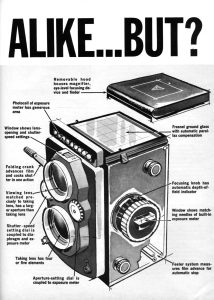
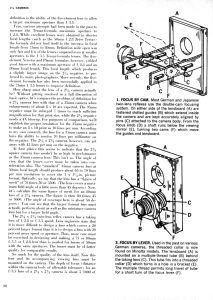
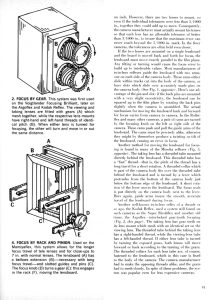
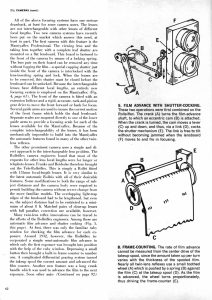

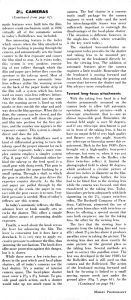
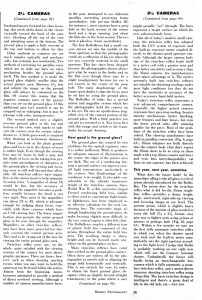
Thanks for this article, Mike. The magazine missed a trick, though, especially as it purported to cover all available TLR types. It missed one TLR that had been on the market for three years prior to the article. This one definitely doesn’t fit the norm. It isn’t box shaped but it does have coupled f2.8 viewing and taking lenses for focusing, and comes with a waist level v/f as standard. Accessory finders were a chimney-style magnifier and a penta-prism, and it also had a coupled exposure meter that was detachable. Shutter speeds went from 1/2 to 1/500 + B and it had a built-in winder. Oh, and did I mention it takes 35mm film?
Any guesses? The Tessina 35. Yes, despite its looks and incredibly tiny size, it’s a genuine TLR.
Aaah yes, the Tessina 35. What a cool camera, and you’re right, it does fit the definition of a TLR, but my guess is that Modern Photography, being a mainstream photography magazine, wanted to cater to what the typical reader considered to be a TLR.
In your overall conclusion, I’m sure you’re right.
Hello Mike, I always love your phantastic articles around vintage camera gear. Having several bread and butter TLRs from European and Japanese makers but loving each of them. The only problem I recently had was that some older rolls won’t get through my Rolleiflex because of the sticky glue at the film start. So the glue spreads over the film roller and in the end all over the film emulsion .
But hey, I took some fresh rolls and cleaned the camera…
Greeting from Dresden in Germany, Jan.
I’ve encountered problems with the sticky tape coming off on old expired rolls of film too. Sometimes the tape isn’t sticky at all, but completely dried up and the film detaches from the backing paper, getting jammed in the camera preventing it from advancing. If I encounter a lot of heavily expired roll film, I’ll generally unroll one of them in a film changing bag before using it, and feel the condition of the tape. In cases where it’s either old and brittle or tacky, I remove it and replace it with fresh tape. It’s a bit of extra work, but it’s worth it to me if it means getting to use long expired film emulsions like Pan-X or ANSCO films.